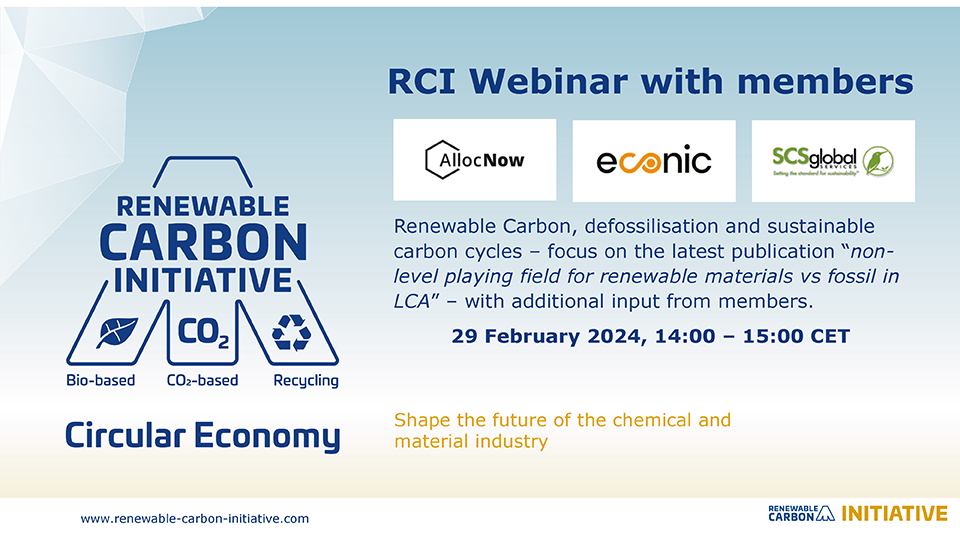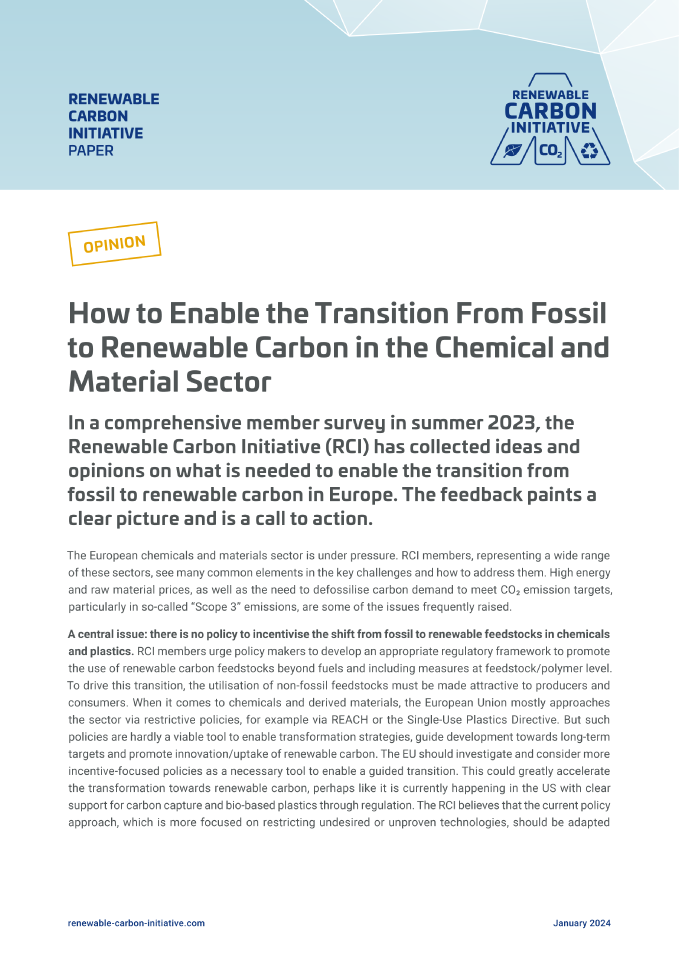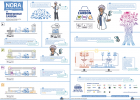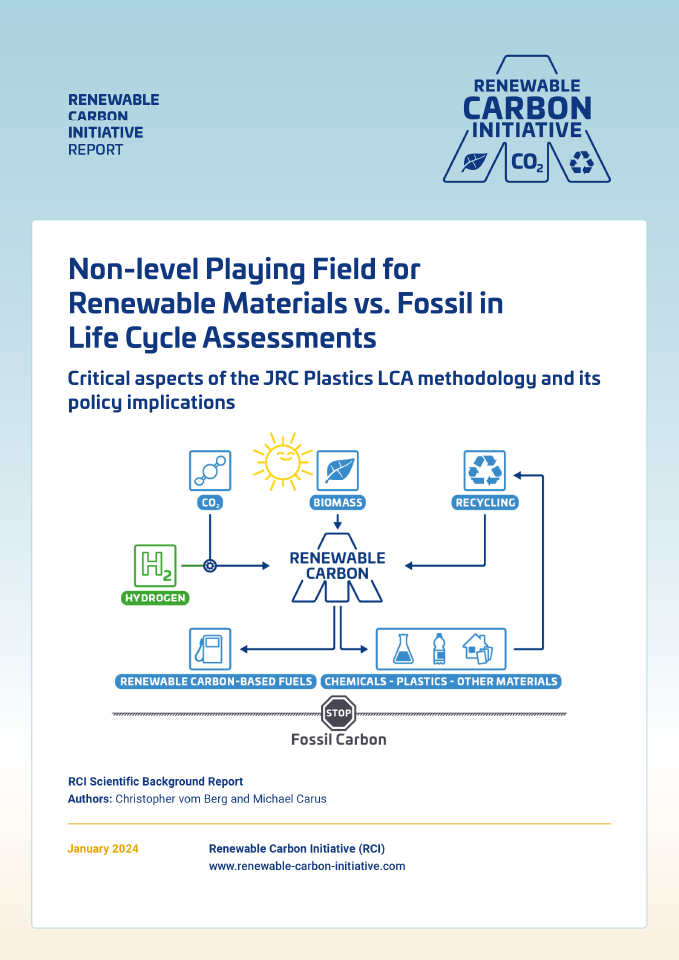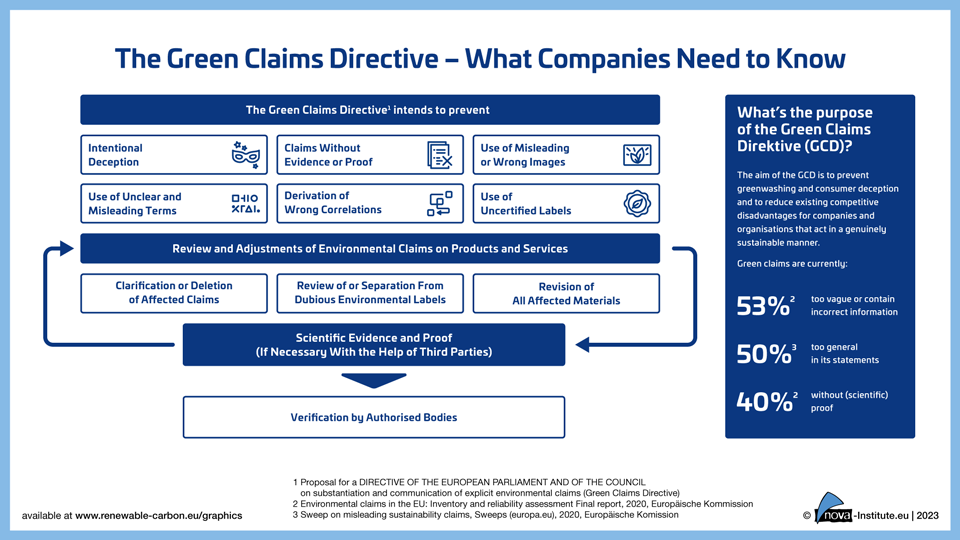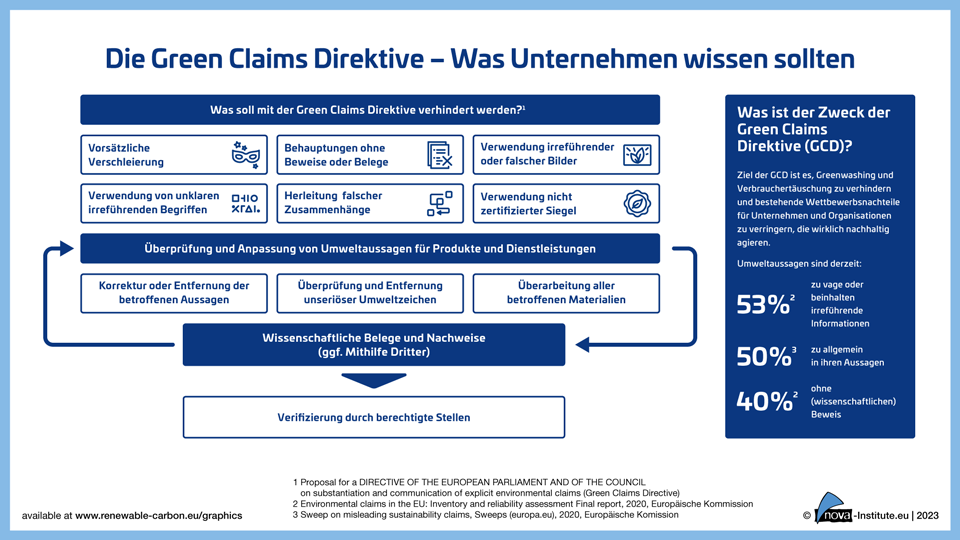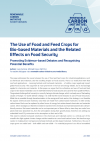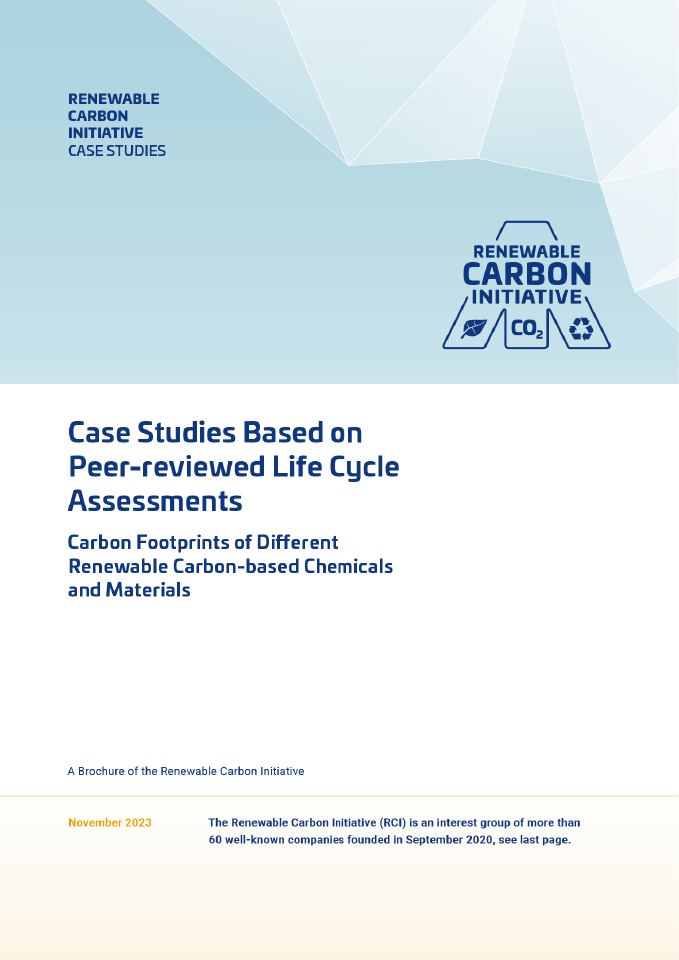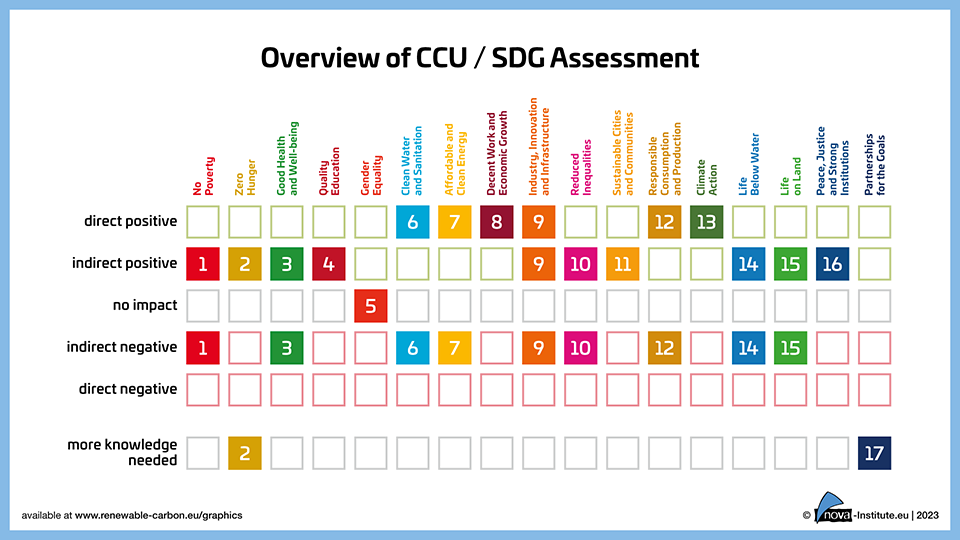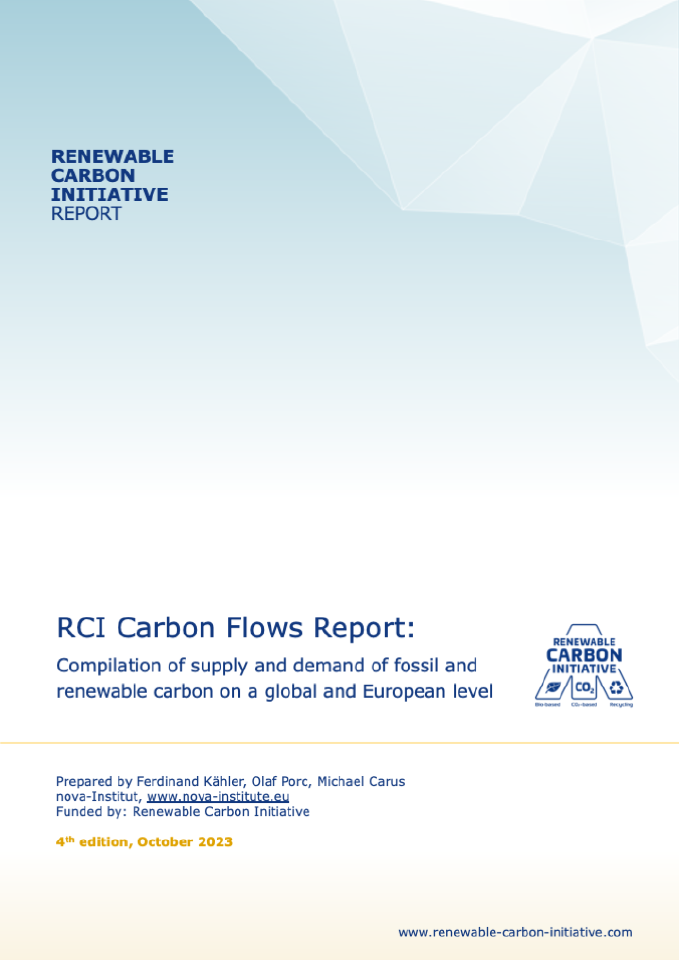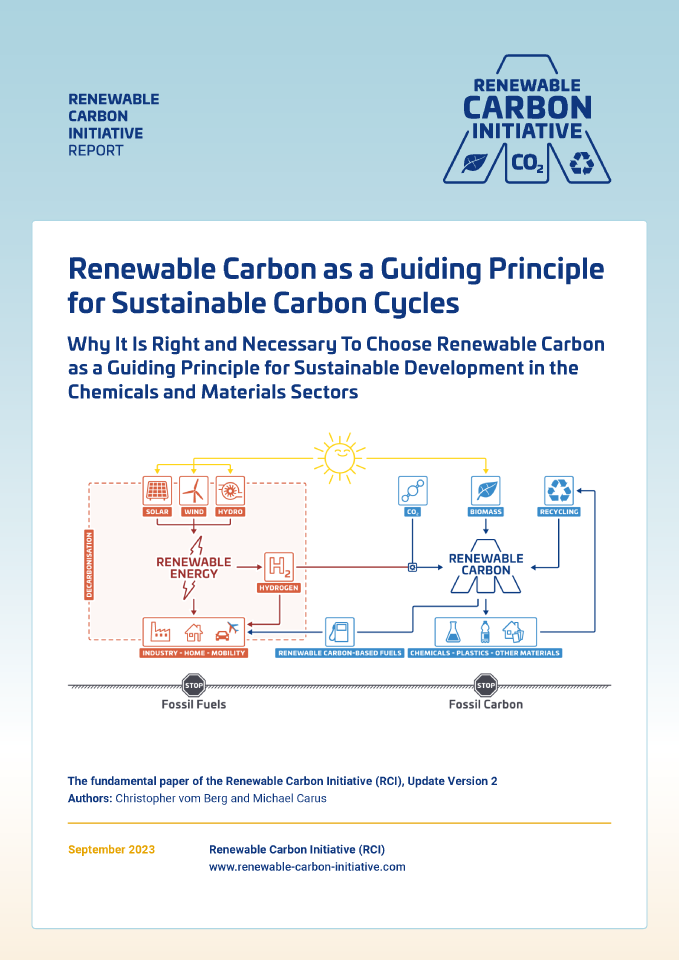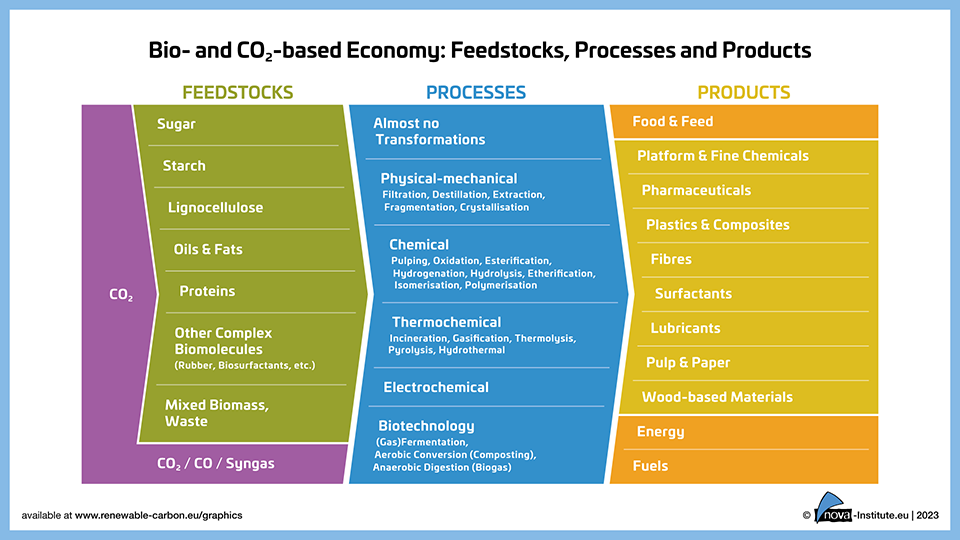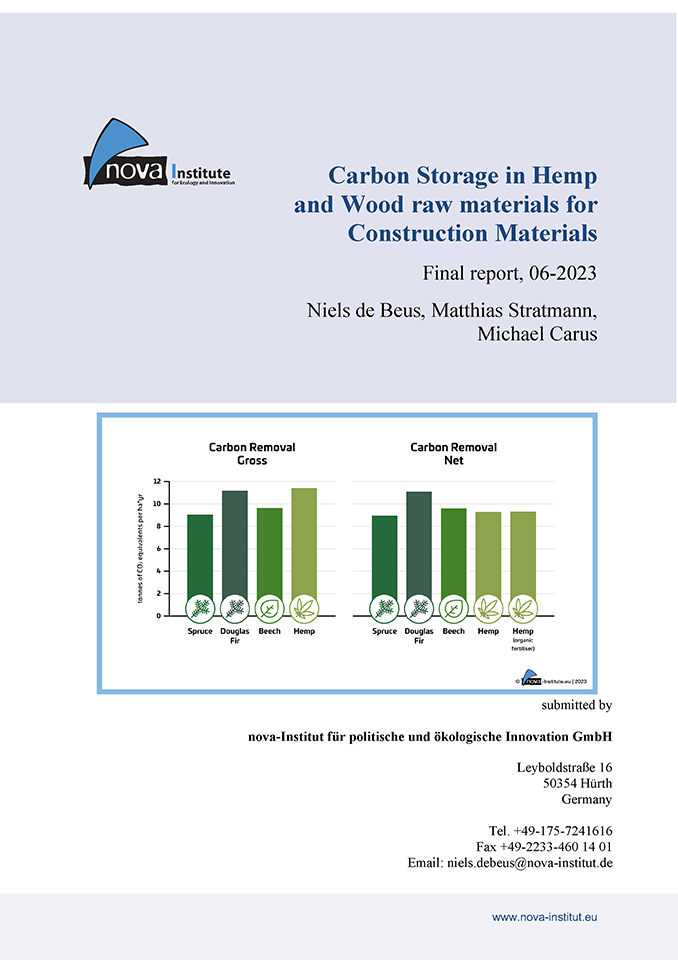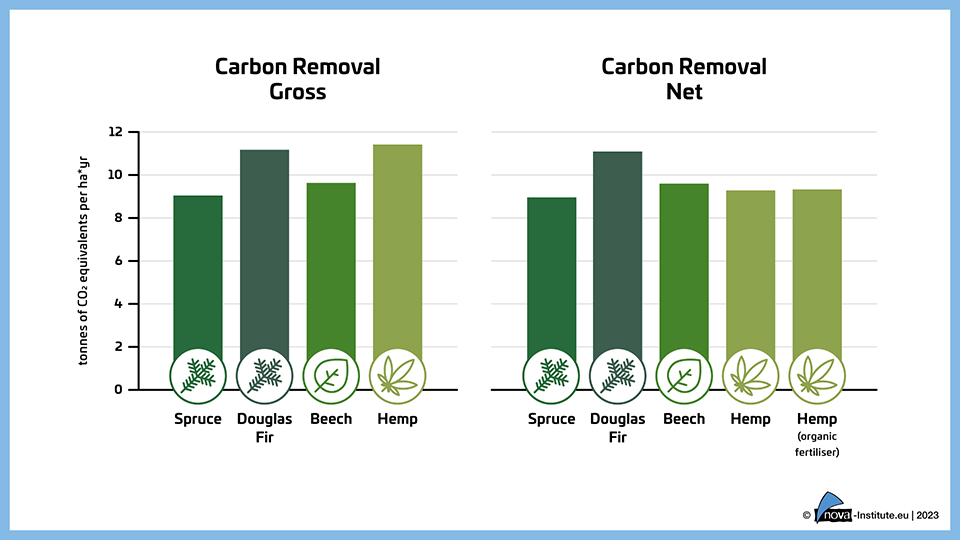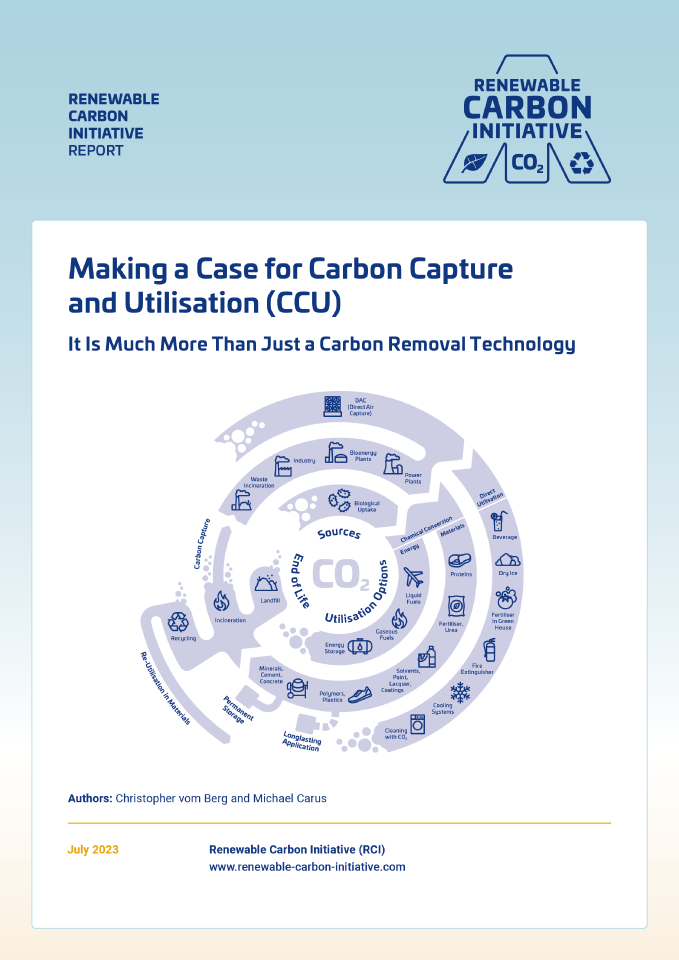Showing 81–100 of 237
-
Bio-based and Biodegradable Plastics Industries in China (PDF)
Markets & Economy, Policy, Sustainability & Health
71 Pages

2024-05
1,500 € – 8,000 €Price range: 1,500 € through 8,000 € ex. tax
Plus 19% MwSt.Press
release Select
licenceChina has emerged as a global leader in strategic technologies such as 5G, renewable energy, and electric vehicles in the past two decades. This dominance may leave European companies impressed and concerned about competition while also sparking curiosity about China’s leapfrogging advancement in these areas.
Paving the way to a net-zero chemical industry in 2060, using renewable biomass to produce bio-based chemicals has been one of the promising transitional solutions for the global chemical industry. As China and Europe strive to follow this path, a similar question may exist within the European chemical industry: What is the status of the bio-based industry in China? Can China and Europe find a cooperative and win-win way to develop this industry?
-
CO2-based Fuels and Chemicals Conference 2024 (Proceedings, PDF)
Markets & Economy, Policy, Sustainability & Health, Technology

2024-05
50 € ex. tax
Plus 19% MwSt.Press
release Add to
cartThe proceedings of the CO2-based Fuels and Chemicals Conference 2024 (17-18 April 2024, https://co2-chemistry.eu) contain all released presentations, the conference journal, and the press release of the three winners of the Innovation Award “Best CO2 Utilisation 2024″.
-
Cellulose Fibres Conference 2024 (Proceedings, PDF)
Markets & Economy, Policy, Sustainability & Health, Technology

2024-04
50 € ex. tax
Plus 19% MwSt.Press
release Add to
cartThe conference covered the entire value chain, from lignocellulose, chemical pulp, cellulose fibres such as rayon, viscose, modal or lyocell and new developments to a wide range of applications:
Textiles from renewable fibres, non-wovens such as wet wipes as well as new areas such as composites, hygiene, packaging or nanocellulose in the food industry. The conference offered deep insights into the promising future of cellulose fibres, which perfectly fits the current trends of circular economy, recycling and sustainable carbon cycles.The Cellulose Fibres Conference Proceedings (https://cellulose-fibres.eu, 13-14 March 2024, Cologne, hybrid) include all released conference presentations, the conference journal, sponsor documents, a Fiber2Fashion Knowledgepaper and the conference press release.
-
Renewable Carbon Initiative (RCI) Webinar slides – February 2024 (PDF)
Policy, Sustainability & Health
61 Pages
1767 Downloads
1767 Downloads
2024-02
FREE
Free Shipping1767
DownloadsThis document contains a generic set of slides to introduce the concept of renewable carbon and the Renewable Carbon Initiative. The focus of this webinar was the latest scientific background report: “Non-level Playing Field for Renewable Materials vs. Fossil in Life Cycle Assessments – Critical aspects of the JRC Plastics LCA methodology and its policy implications”.
In addition, three RCI member companies shared their expertise on renewable carbon, defossilisation and sustainable carbon cycles.
AllocNow (speaker: Daniel Bochnitschek) talked about how the increasing demand for sustainable and low carbon products is driving the need for specific and comprehensive information on product carbon footprints. AllocNow discussed why standardisation of sustainability accounting methodologies is critical and how a data-driven approach can help create transparency at scale.
Econic Technologies Ltd. (speaker: Liz Manning) spoke about the opportunities and challenges of quantifying the sustainability impact of key products in complex manufacturing supply chains.
SCS Global Services (speakers: Miguel Ruiz and Jéssica Marcon Bressanin) highlighted its certification activities, focusing on biofuels and circular materials schemes, as well as greenhouse gas accounting methodologies.
More information at https://renewable-carbon-initiative.com/media/library
-
RCI’s Internal Survey: „How to enable the transition from fossil to renewable carbon in the chemical and material sector“ (January 2024)
Policy, Sustainability & Health
3 Pages
664 Downloads
664 Downloads
2024-01
FREE
664
DownloadsIn a comprehensive member survey in summer 2023, the Renewable Carbon Initiative (RCI) has collected ideas and opinions on what is needed to enable the transition from fossil to renewable carbon in Europe. The feedback paints a clear picture and is a call to action.
The European chemicals and materials sector is under pressure. RCI members, representing a wide range of these sectors, see many common elements in the key challenges and how to address them. High energy and raw material prices, as well as the need to defossilise carbon demand to meet CO2 emission targets, particularly in so-called “Scope 3” emissions, are some of the issues frequently raised.
-
1302 Downloads
2024-01
FREE
1302
Downloads -
Nora and her flyphone on renewable carbon (Comic)
Policy, Sustainability & Health
2 Pages
850 Downloads
850 Downloads
2024-01
FREE
850
Downloads -
RCI’s scientific background report: “Non-level playing field for renewable materials vs. fossil in Life Cycle Assessments” (January 2024)
Policy, Sustainability & Health
44 Pages
1541 Downloads
1541 Downloads
2024-01
FREE
1541
DownloadsCritical aspects of the JRC Plastics LCA methodology and its policy implications
This RCI Scientific Background Report was mainly motivated by a study published by JRC in 2021 with the title: “LCA of alternative feedstocks for plastic products”, commonly referred to as the JRC Plastics LCA Method (Nessi et al. 2021).
Alternative feedstocks refer to the same three feedstocks that RCI defines as renewable carbon: biomass, CO2 utilisation and recycling. The study describes a methodology developed by the JRC to compare the environmental performance of alternative feedstocks with fossil-based plastic products. However, the methodology has also been subject to criticism from various stakeholders, mainly from the bio-based sector, eliciting responses from the JRC.
This RCI report is mainly aiming to provide additional context to highlight issues that might arise with implementation of the JRC Plastics LCA methodology, and dives deeper into five aspects:
- The fossil footprint is likely underestimated, not transparent and lacks regional differentiation
- Renewable feedstocks are more cirtically evaluated than fossil feedstocks
- Methodological inconsistency and different regulatory support between energy and material use of renewable feedstocks
- Biogenic/Atmospheric carbon uptake cannot be transparently visualised at factory in PEF / JRC Plastics LCA methodologies
- The methodology should acknowledge the wider interface of sustainability assessment, policy design and landscape
The report contains several recommendations to remedy the above-mentioned aspects.
DOI No.: https://doi.org/10.52548/KOTY2900
-
Advanced Recycling Conference 2023 (Proceedings)
Markets & Economy, Policy, Sustainability & Health, Technology

2023-12
50 € ex. tax
Plus 19% MwSt.Press
release Add to
cartThe proceedings of the Advanced Recycling Conference 2023 (28-29 November, https://advanced-recycling.eu) contain conference presentations, the conference journal, sponsor documents and the press release. Download of the conference journal incl. the program.
-
The Green-Claims-Directive – What Companies Need to Know (PNG)
Policy, Sustainability & Health
1 Page
533 Downloads
533 Downloads
2023-12
FREE
533
DownloadsSo far, companies can use terms such as “climate-neutral”, “recyclable”, “environmentally friendly” or self-created logos, which are intended to emphasise the environmental friendliness of a product, to advertise products and services without third-party verification. With the proposal for the Green Claims Directive, the EU wants to change this practice. The aim is to test and certify the green claims by an external testing authority. This would require a scientific verification. This graphic provides companies with an initial overview of what the new EU proposal could mean for them.
Lean more about this topic and join our nova-Session “Sustainability Claims under New EU Legislation” (7 February, 13:00-15:00 CET, online): https://events.renewable-carbon.eu/event/green-claims-directive
-
The Green-Claims-Directive – Was Unternehmen wissen sollten (PNG)
Policy, Sustainability & Health
1 Page
181 Downloads
181 Downloads
2023-12
FREE
181
DownloadsBisher können Firmen Begriffe wie “klimaneutral, “recycelbar”, “umweltfreundlich” oder selbst kreierte Logos, welche die Umweltfreundlichkeit eines Produkts hervorheben sollen, ohne Prüfung durch Dritte für die Bewerbung von Produkten und Services nutzen. Mit dem Vorschlag zur Green Claims Richtlinie will die EU diese Praxis ändern. Ziel ist die Prüfung und Zertifizierung der sogenannten green claims (Umweltaussagen) durch eine externe Prüfstelle. Notwendig dafür wird dann ein wissenschaftlicher Nachweis. Mit dieser Grafik können sich Unternehmen einen ersten Überblick darüber verschaffen, was mit dem neuen Vorschlag der EU auf sie zukommen könnte.Erfahren Sie mehr über dieses Thema und besuchen Sie unsere nova-Session “Sustainability Claims under New EU Legislation” (7. Februar, 13:00-15:00 CET, online): https://events.renewable-carbon.eu/event/green-claims-directive -
RCI’s scientific background report: “The use of food and feed crops for bio-based materials and the related effects on food security – Promoting evidence-based debates and recognising potential benefits” (June 2023) Short Version
Markets & Economy, Policy, Sustainability & Health, Technology
2 Pages
988 Downloads
988 Downloads
2023-11
FREE
988
DownloadsPromoting Evidence-based Debates and Recognising Potential Benefits
This short version of the scientific paper highlights on two pages new insights into a hotly debated topic and urges for careful and evidence-based debates.
The paper aims to show that the well-known biomass debate is flawed, subjective and not fully based on evidence. What is detrimental to food security are, according to the World Food Programme in 2023, climate change, conflict, extreme inequalities in wealth distribution, heavy dependence on food imports from industrial countries, overconsumption of meat, losses along the value chain and the impact of the COVID pandemic. Competition between biomass uses is not mentioned among the relevant causes.
The use of biomass for industrial applications, does have the potential to replace fossil feedstocks and thus contribute to the urgently needed reduction of fossil carbon emissions into our atmosphere to mitigate climate change.
While not denying the dire need to combat world hunger, the authors of the paper argue that using food and feed crops for chemicals and materials will not necessarily exacerbate food insecurity, and in fact has the potential to cause multiple benefits for local and global food security, climate mitigation and other factors:
- The climate wins – Bio-based materials are part of the solution to achieve climate change mitigation.
- Land productivity wins – The competition between applications is not for the type of crop grown, but for the land.
- The environment wins – due to increased resource efficiency and productivity of food and feed crops.
- Farmers win – because they have more options for selling stock to different markets.
- Market stability wins – due to increased global availability of food and feed crops.
- Feed security wins – due to the high value of the protein-rich co-products of food and feed crops.
- Food security wins – due to the increased overall availability of edible crops that can be stored and flexibly distributed.
-
RCI’s scientific background report: “Case studies based on peer-reviewed Life Cycle Assessments – Carbon footprints of different carbon-based chemicals and materials” (November 2023)
Sustainability & Health
39 Pages
2262 Downloads
2262 Downloads
2023-11
FREE
2262
DownloadsIn this brochure, the RCI (https://renewable-carbon-initiative.com) presents five peer-reviewed LCA case studies – representing the highest possible scientific standard – that examine the carbon footprint of materials and products made from renewable carbon. These case studies are on products from RCI member companies Avantium (NL), BASF (DE), IFF (US), Lenzing (AT), Neste (FI) and all LCAs have been peer-reviewed by external experts. The LCAs have been summarised by experts of nova-Institutes sustainability team.
The case studies visualise that there are not only competitive materials and products made of renewable carbon already on the market, but that they also come with significantly lower carbon footprints ranging from 30–90%.
A key aspect of replacing fossil carbon with renewable carbon is the gained circularity of carbon. The less additional fossil carbon is added to our above-ground cycle of atmosphere, biosphere and technosphere, the smaller will be the amount of carbon emissions that have to be balanced out with expensive atmospheric removal and underground storage of carbon.
It is essential to recognise that the carbon footprint of renewable carbon-based materials is not automatically close to zero for two primary reasons:
- Fossil energy in the value chain
- Ongoing innovation and optimisation
All in all, the here presented materials and products show reduced carbon footprints already today, which lowers the remaining emissions gap so that less CO2 needs to be removed from the atmosphere in the future. At the same time, these materials and products still have significant potential to further reduce emissions in the future.
DOI No.: https://doi.org/10.52548/YYZY2819
-
194 Downloads
2023-10
FREE
194
Downloads -
RCI’s scientific background report: “RCI carbon flows report – Compilation of supply and demand of fossil and renewable carbon on a global and European level” (Oct. 2023)
Policy, Sustainability & Health
92 Pages
3262 Downloads
3262 Downloads
2023-10
FREE
3262
DownloadsThe Carbon Flows report is a compilation of supply and demand of fossil and renewable carbon on a global and European level. It provides a comprehensive understanding of today’s carbon flows and what it means to replace fossil carbon with renewable carbon in the materials and chemicals sectors. It’s main intent is to provide a uniform and transparent data basis for a future carbon management that can be used and shared by industry, associations, policy-makers, science and alike.
In the last five years, the mindset around carbon has changed fundamentally. Of course, there is no way around the fact that the rising concentration of carbon dioxide in the atmosphere pose an existential threat to life on Earth. But at the same time, carbon is the main component of our food, the basis of all organic chemicals and plastics, and the backbone of life on Earth.
In the chemicals and plastics sectors in particular, almost 90% of the carbon used as feedstock is fossil carbon. This fossil carbon must be replaced by renewable carbon from recycling, biomass and CO2 by 2050 to avoid a further influx of fossil carbon into our technosphere and atmosphere.This report provides a comprehensive, detailed and updated carbon flow data basis that significantly surpasses previous publications, containing more than 35 figures and tables with corresponding descriptions of methodology, source material and data. All data have been corroborated as best as currently possible by scientific publications, feedback from experts and additional research. Remaining gaps and differences are transparently depicted and explained as well as possible.
The nova experts assessed data from a multitude of sources. A wide range of data on material flow are used to compile a comprehensive inventory of carbon stocks and flows. The sectors covered include all applications of organic carbon from fossil resources and biomass production, from raw materials through utilisation to final end-of-life. This includes use of carbon for feed and food, for materials, for energy and for fuels. A special focus is put on the carbon demand in the chemical and plastic industry today and tomorrow, with several figures specifically zooming into this sector and including scenarios for a full defossilisation by 2050.
The Carbon Flows report is designed to be a living document that we would like to update every one to two years if possible. This also means that we look forward to your feedback, additional input, new data and suggestions from any interested party. Please directly contact the main author of the study for this: ferdinand.kaehler@nova-institut.de
DOI No.: https://doi.org/10.52548/KCTT1279
-
RCI’s scientific background report: “Renewable carbon as a guiding principle for sustainable carbon cycles (Update)” (September 2023)
Policy, Sustainability & Health
51 Pages
1227 Downloads
1227 Downloads
2023-09
FREE
1227
DownloadsWhy It Is Right and Necessary To Choose Renewable Carbon as a Guiding Principle for Sustainable Development in the Chemicals and Materials Sectors
The Scientific Background Report on “Renewable Carbon as a Guiding Principle for Sustainable Carbon Cycles – Why It Is Right and Necessary To Choose Renewable Carbon as a Guiding Principle for Sustainable Development in the Chemicals and Materials Sectors“ was RCI’s first major publication and forms the basis for the concept and strategy of the RCI. Together with input from all members, the RCI has worked on an updated version – In this second edition, the following main changes have been implemented:
- New IPCC data on greenhouse gas emissions from the 6th Assessment Report (published March 2022) have been integrated.
- To establish proper data baselines, entirely novel carbon flows data have been integrated.
- The initial eleven policy recommendations were further sharpened, fine-tuned and concretised through lots of feedback from talks with politicians, NGOs, industrial actors, the bio-based, CO2-based and recycling sector, energy experts and many other stakeholders. Further political demands resulted from these discussions as well as recently published RCI position papers and consultations, which are now also integrated into the paper.
To reduce greenhouse gas emissions and mitigate climate change, the inflow of fossil carbon must be reduced quickly and in high volumes. The EU has started pushing for decarbonisation in energy and transport sectors, but has largely ignored chemical and material industries. These sectors require carbon-based feedstocks and cannot be “decarbonised,” so tackling embedded carbon in these industries is crucial. This paper proposes an approach to minimize environmental impact and maximize the reduction of GHG emissions.
DOI No.: https://doi.org/10.52548/CXFS7519
-
“Bio- and CO2-based Economy: feedstocks, processes and products” − Graphic – Update
Markets & Economy, Sustainability & Health, Technology
1 Page
3402 Downloads
3402 Downloads
2023-09
FREE
3402
Downloads -
Carbon Storage in Hemp and Wood raw materials for Construction Materials
Sustainability & Health
20 Pages
478 Downloads
478 Downloads
2023-07
FREE
Free Shipping478
DownloadsAs such, it is interesting to investigate the potential of biomass to store carbon in raw materials used in industry, more specifically the construction industry. What is the potential of biomass to supply the construction industry with raw materials containing temporarily stored biogenic carbon per hectare and year? Are there differences between various biomass types? What is the associated reduction of atmospheric greenhouse gasses due to the carbon in the raw materials? What are the emissions of greenhouse gasses associated with this provision of raw materials? This study will look into these questions for wood and hemp based raw materials which can be used in the construction industry. The production of the construction materials, and the associated emissions with the conversion of the raw materials to final products, is outside the scope of this assessment due to the wide variety of construction materials which can be produced from the raw materials. The study has calculated the potential of a hectare of wood and hemp to transfer carbon from the biosphere to materials which can be used in the construction and insulation industry. The potential of a hectare of wood and hemp to provide carbon to the construction industry, including greenhouse gas emissions associated with the production, is similar.
-
Gross and net carbon removal of hemp and wood per hectare and year (PNG)
Sustainability & Health
1 Page
86 Downloads
86 Downloads
2023-07
FREE
Free Shipping86
Downloads -
RCI’s scientific background paper: “Making a case for Carbon Capture and Utilisation (CCU) – It is much more than just a carbon removal technology” (July 2023)
Markets & Economy, Policy, Sustainability & Health, Technology
48 Pages
2083 Downloads
2083 Downloads
2023-07
FREE
Free Shipping2083
DownloadsThis scientific background paper highlights the importance of Carbon Capture and Utilisation (CCU) and the need for more political recoginition and support for CCU.
CCU enables the substitution of fossil carbon in sectors where carbon is necessary, supports the full defossilisation of the chemical and derived material industries, creates a circular economy, reduces the emission gap, promotes sustainable carbon cycles, fosters innovation, generates local value and stimulates job growth.
CCU is much more than a carbon removal technology: the technology offers multiple solutions to pressing problems of our modern world and can support several Sustainable Development Goals if implemented properly.
In total, 14 different benefits and advantages of CCU are described and discussed in the paper. A key advantage is that CCU supplies renewable carbon to – and thereby substitutes fossil carbon in – sectors that will require carbon in the long run. This includes the chemical sectors and products like polymers, plastics, solvents, paints, detergents, cosmetics or pharmaceuticals. But CCU is also essential to a long-term net-zero strategy, crucial for creating a sustainable circular economy, providing solutions for scaling up the renewable energy system, and bringing multiple benefits for innovation and business.
The relevance of the technology is not yet accepted in Europe, but the RCI wants to make a very clear statement: CCU is a central pillar for the biggest transformation of the chemical and material industry since the industrial revolution.
DOI No.: https://doi.org/10.52548/VYKR3129

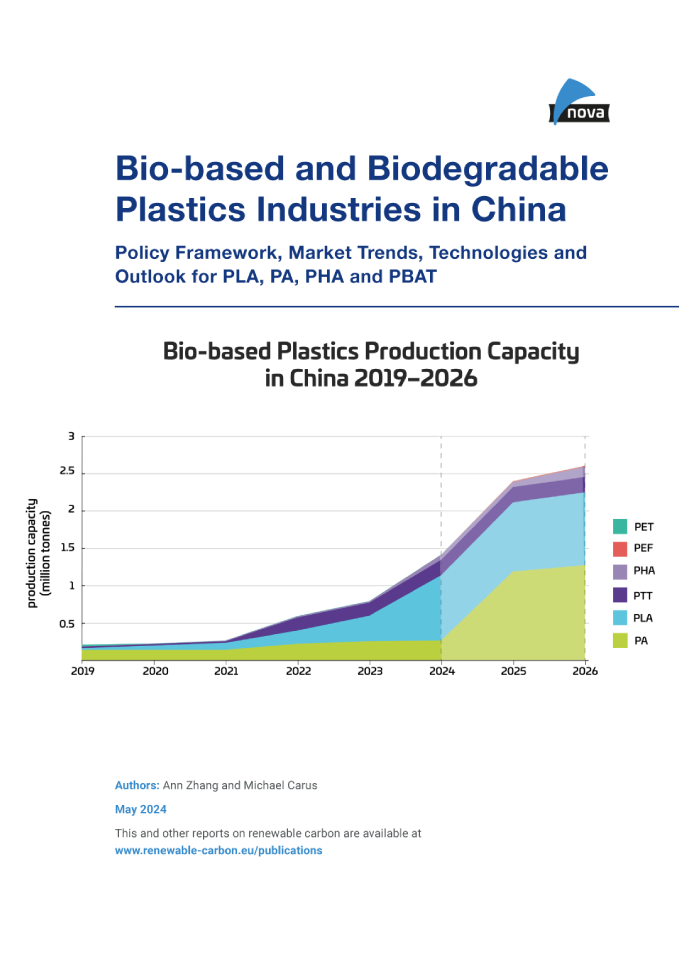
![CO2-based Fuels and Chemicals Conference 2024 (Proceedings, PDF) [Digital]](https://renewable-carbon.eu/publications/wp-content/uploads/2020/05/21-01-07_RC-Publications-Cover-Proceedings_CO2-based-100x141.png)
![Cellulose Fibres Conference 2024 (Proceedings, PDF) [Digital]](https://renewable-carbon.eu/publications/wp-content/uploads/2020/05/21-01-07_RC-Publications-Cover-Proceedings_Cellulose-Fibres-100x141.png)
